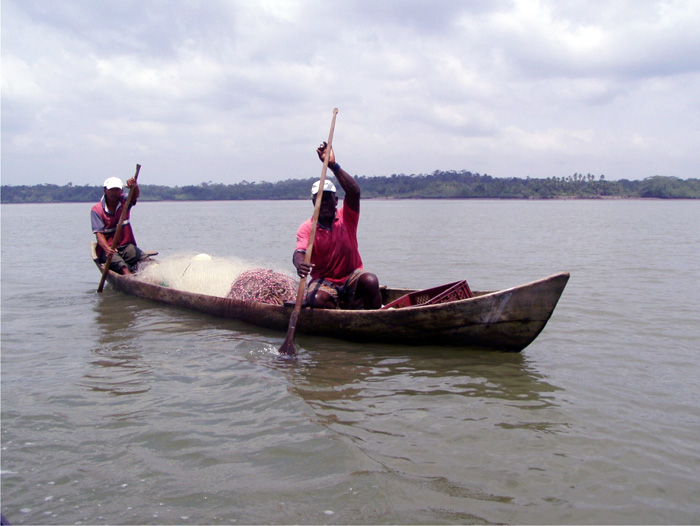An investigation performed by the Contamination and Ecology Group in Palmira"s campus reveals that mercury, which is traditionally used for gold exploitation, is contaminating Bluegill, Sea Bass, Grunt and other fish eaten by humans in the Colombian Pacific. This metal is in the fish"s blood and muscles in high amounts in different species.
The situation is alarming because, since the end of 2009, the Ministry of Mines and Energy reported a gold production of 47,84 millions of grams in the country, and according to the owners of the dredging machines in Zaragoza Township, in Buenaventura, in the same period 40 tons of gold were extracted. These figures represent COP 2,1 billion. The out of control exploitation is a direct result of an increase in the international gold price and the drop of the dollar price.
"After analyzing blood and tissue samples in more than 120 individuals and taking samples of the seafloor, we found high concentrations of biocumulation (an amount of the contaminating substance in the water and food that is transmitted to fish) and biomagnification (an increase of the concentration of the contaminating substance) of metal in this aquatic animals," said the project"s director, Proffesor Guillermo Duque, PhD in Oceanography and Coast Sciences.
The investigation revealed that the highest concentration of mercury is in Grunt fish, with 0,62 µg/g (microgram of mercury in each muscle gram) of the metal. Bluegill is next with 0,36 µg/g and then Sea Bass with 0,21 µg/g. This last species, despite having the lowest concentration among the three species, exceeds the maximum amount permitted for human consumption, which is 0,2 µg/g according to the World Health Organization.
For Doctor Javier Rodríguez, Magister in Toxicology, mercury effects are highly toxic. "It can produce alterations in the peripheral and central nervous system, which is reflected in behavior changes, movement and speech difficulties, and reduction in vision sharpness and hearing perception."
Who is responsible for this situation"
Article 39 from Decree 2820 of 2010 establishes that environmental authorities (on this case, Corporación Autónoma Regional del Valle del Cauca, CVC) have to control and monitor the projects, constructions or activities subject to environmental license or Plan de Manejo Ambiental (Environmental Management Plan).
Regarding this case, the Minister of Environment, Housing and Regional Development, Beatriz Elena Uribe, affirms that "the portfolio is waiting for the study results ordered by the Second Court of Buenaventura about the effects of illegal mining, which is taking place in Zaragoza Township, although information about this specific place is nonexistent."
It is important that both, miners and people in charge of the manipulation of these materials, such as the different environmental entities that have to regulate and control the use of these highly toxic elements, become aware about the importance of the correct use and control of material and chemical waste for extinction not to happen in the future.
For more information, please call (2) 271 7000, ext. 35470, or write an e-mail to gduquen@palmira.unal.edu.co.
Sedes
 Correo Electrónico
Correo Electrónico
 DNINFOA - SIA
DNINFOA - SIA
 Bibliotecas
Bibliotecas
 Convocatorias
Convocatorias
 Identidad UNAL
Identidad UNAL



